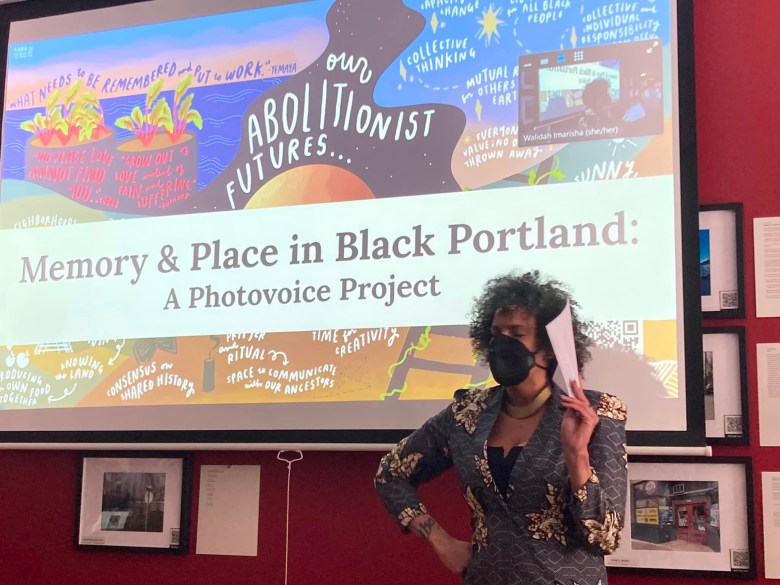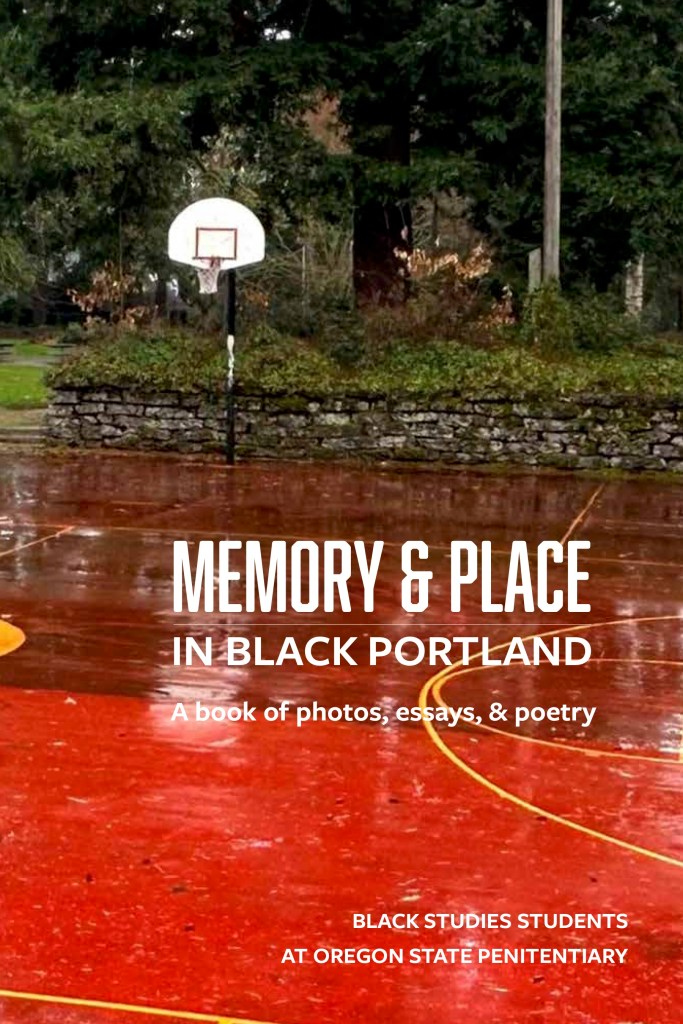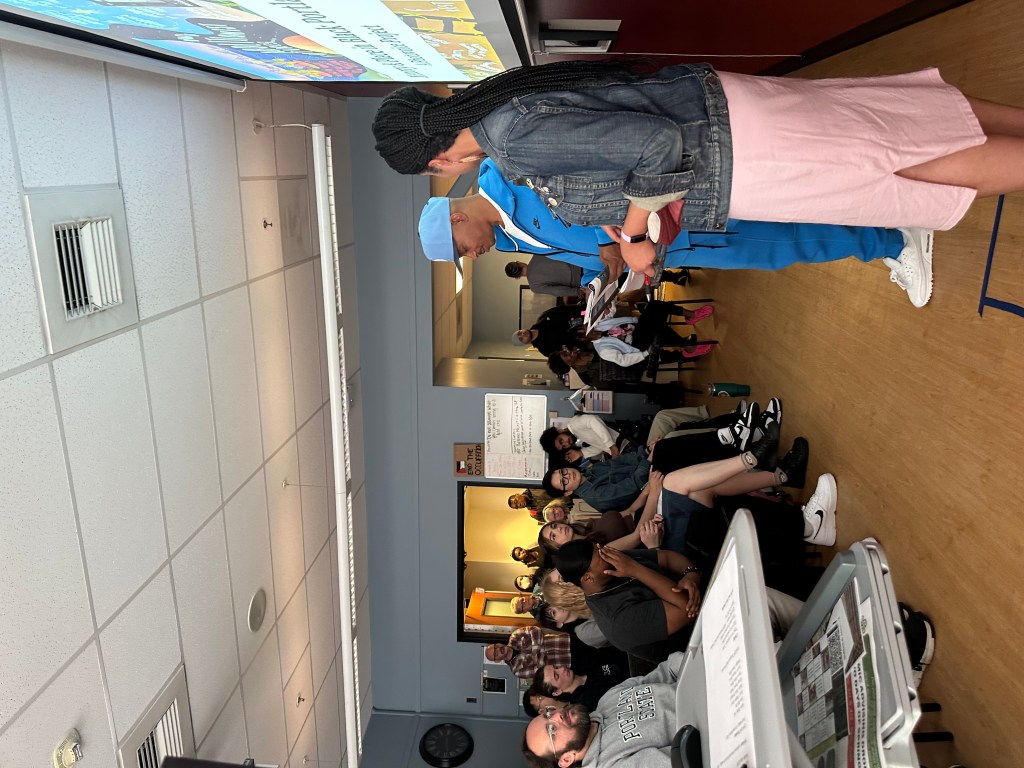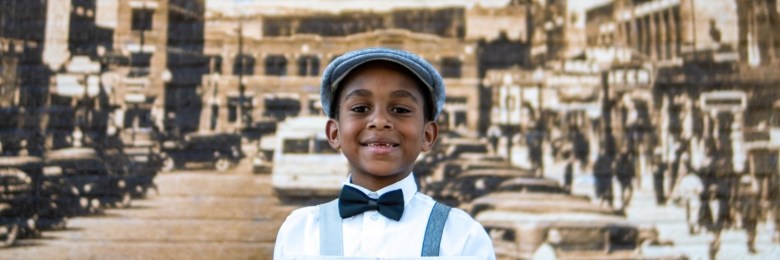PORTLAND, Ore. – As a small but mighty population, Black people in Portland archive and hold on to memories, places, and spaces. A Black Studies curriculum at Portland State University connects incarcerated students to unapologetic education.
Surprisingly, Oregon became the only “free state” admitted into the Union with exclusionary laws against Black Free People of Color.
The clauses discouraged many Black people from settling in Oregon and weren’t formally abolished until 1926.
Founded in 1969, the Center for Black Studies at Portland State University became a major archive and research component for the Black Studies Department (est. September 1970).
In addition, PSU is the only higher education institution in Oregon offering a Black Studies degree, an unsettling reminder of how undervalued Black scholarship is.
To continue its mission to enlighten and uplift all students, Walidah Imarisha, Director of the Center for Black Studies and Associate Professor in the Black Studies Department, connected with Uhuru Sasa (est. 1968), the Black cultural group at Oregon State Penitentiary.
She began offering uncredited Black Studies-related courses to those incarcerated.
Eventually, the Black Studies Department collaborated with PSU’s Higher Education in Prison program (HEP) to advance incarcerated students’ education at the Oregon State Penitentiary.
“I connected with HEP, and they helped make sure our students got enrolled and received credits toward a bachelor’s degree. We had our first credited class, Intro to Black Studies, in the Spring of 2023 and we have taught at least one course there every term since,” Imarisha said.
Through this journey, the program now offers a Black Studies certification for students.
The Black Wall Street Times interviewed Walidah Imarisha to examine impactful projects like “Memory and Place in Black Portland,” the “Education and Creativity” Zine, and the power of collaboration.
Collaboration and the Zine Release

In 2023, the collaborative efforts of the Black Studies Department, Uhuru Sasa, and the HEP program delivered great news to OSP.
“We spent years planning the content and what folks wanted. We surveyed folks inside to make sure that the curriculum was what they were interested in,” Professor Imarisha said.
In their Introduction to Black Studies class, students focused on a project about creativity and education in prison. They created the “Umoja as Black Aesthetics” Zine.
The visionary liaison of Uhuru Sasa, Kenneth “Kenny” Hamilton said, “Within the institution, they have barriers set in place for people wanting education within their institution as far as higher education is concerned. With our organization, we didn’t like the way they would limit the type of person that could enroll in these classes. So, we had to come up with another way for people who want to learn but don’t necessarily meet the requirements to be able to join their standard program.”
The interactive program introduces students to Black History and Black Studies and encourages them to lead in society.
What began as an Introduction to Black Studies course is now a certification. Fortunately, the course credits go toward their Bachelor’s degree.
In June 2023, they celebrated the release at the Smith Memorial Student Union as a part of PSU’s “The Black Bag Speakers Series,”
PSU printed and distributed over 200 zines, including photo collages, poems, art drawings, and more from students.
Memory and Place in Black Portland

According to Census.gov, Oregon’s African American population is 2.2% (around 80,000). Meanwhile, Black people make up 9.2% (1,106) of Oregon’s prison system.
The Memory and Place in Black Portland course and project highlights the history and culture of Black Portland. It also addresses the ongoing rapid gentrification.
Dr. Lisa Bates, Dr. Ryan Petteway, Professor Imarisha, and a community-based organization, Imagine Black, formed the research partnership.
“The main assignment for the students beyond their academic papers was to identify places around the city that were meaningful to them,” Imarisha said. “We then got to work with Project Rebound students, a peer support group for formerly incarcerated students, who took pictures of those places, and then our students wrote narratives and poems. The focus was on ideas of community, safety, connection, and home.”
Spaces like Matt Dishman Community Center, Knott Street Boxing Club, and Woodlawn Park inform readers of the highs and lows of North and Northeast Portland.
“Memory and Place in Black Portland” features over 15 students’ photos, essays, and poetry to emphasize “Black Placemaking.”
In addition, students like Dwayne McClinton reimagined historical spaces in Portland with a futuristic lens.
“The students put so much thought and work into sharing their experiences, many of which were bittersweet. Gentrification has ravaged the historic Black Portland neighborhoods, as it has everywhere. So, many of the places that were so meaningful to the students are gone physically,” Imarisha said.
It’s important to highlight impactful projects at a time when President Trump is enforcing laws that spread misinformation.
Through meaningful work, Black people’s contributions and history will remain.
Interviewing Black Studies Students

The Black Studies Department and Uhuru Sasa conducted interviews for the “Memory and Place in Black Portland” book release. Students discussed their journey and motivations for the photovoice project.
Portland native Wallace Simpson shared, “I wanted to explore my experiences and how they connect to the historical roots of the Albina District of where I come from… Black Placemaking is a representation of what we’ve done as African Americans since we’ve got here.”
He further explains that local governments place Black people in unpleasant areas until the community adds value to the neighborhood. In return, this builds Black Placemaking.
Students shared that art, community safety, education, documenting history, and togetherness progress and protect Northeast Portland Black families.
“I was moved by the students taking such care to record and remember these places, and recognizing that even when places are physically gone, they are not lost when people remember. I also learned so much from the students, many of whom had grown up in historic Black Portland and shared their expertise in a way that I, who had studied the topic for 15 years, couldn’t have done,” Imarisha said.
The readings and photos are available online and physical copies are also available.
With Black History under attack nationwide, projects like these are critical. To support this work, readers can explore PSU’s archives, uplift Black-led education programs, and invest in community storytelling that refuses erasure.
Related Stories:
- Louisiana Creolophones encourage Creoles to learn their Heritage Language
- Beyond Apology Commission Pushes $24M Reparations Housing Plan
- A New York State of Mind Meets Tulsa’s Resurgence: How Tai Nehisi Found Home Through Tulsa Remote



Leave a comment